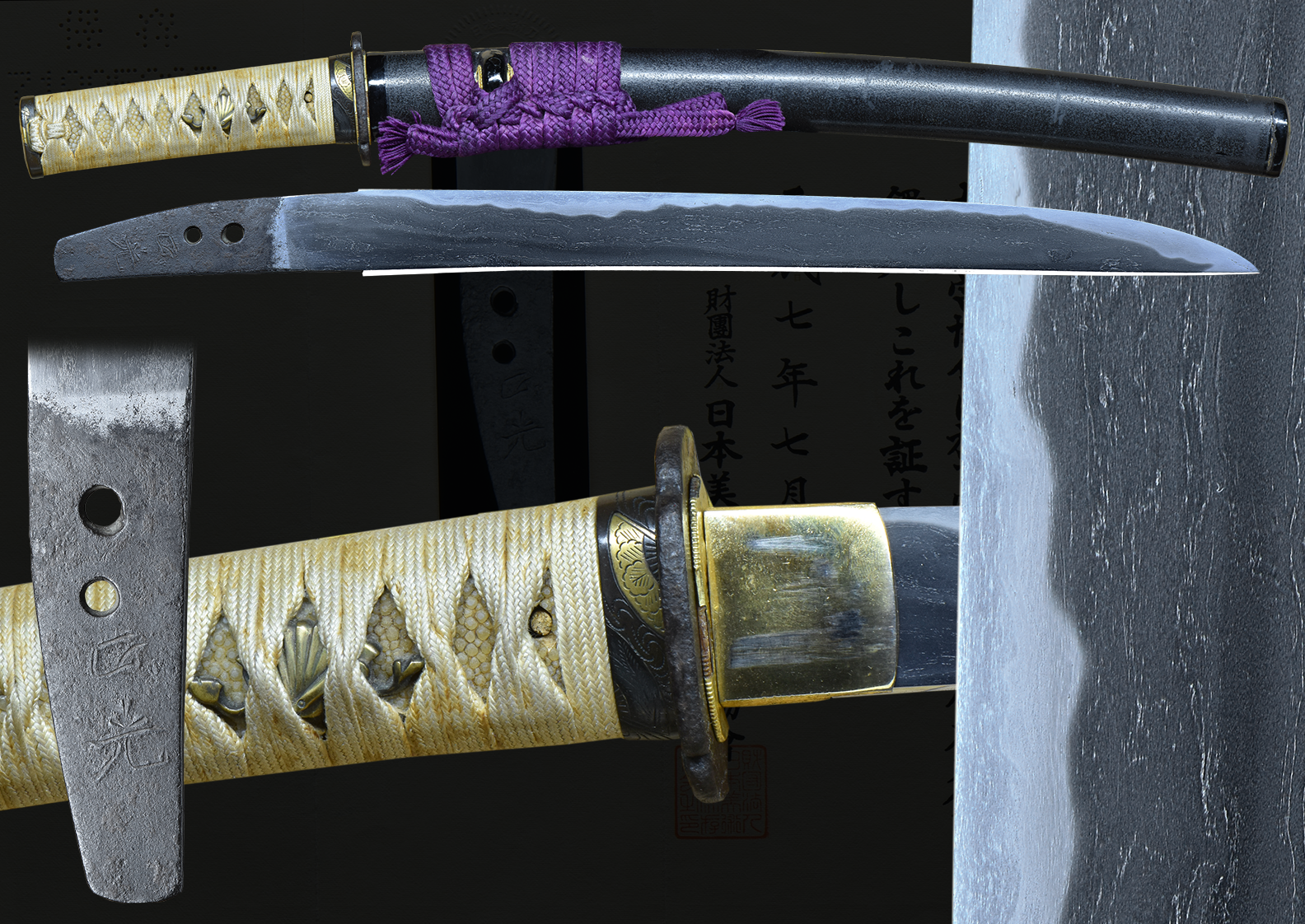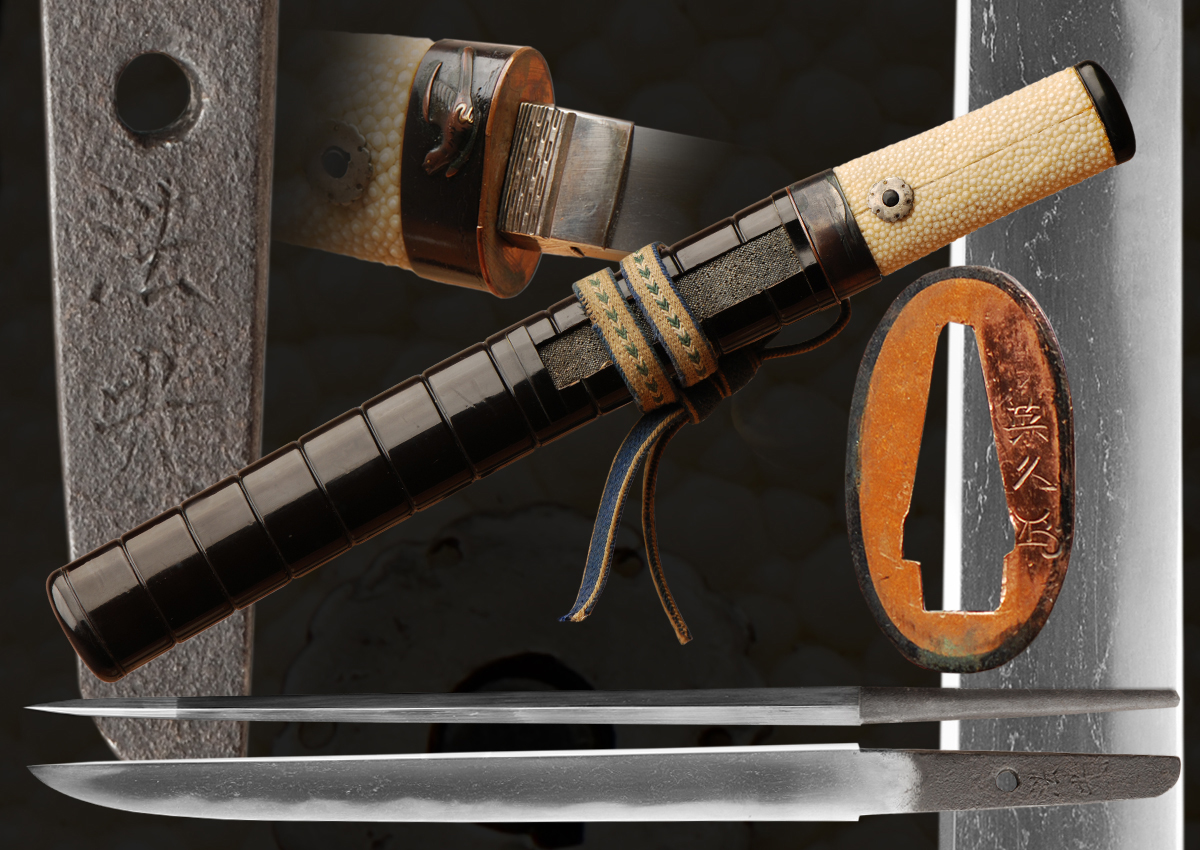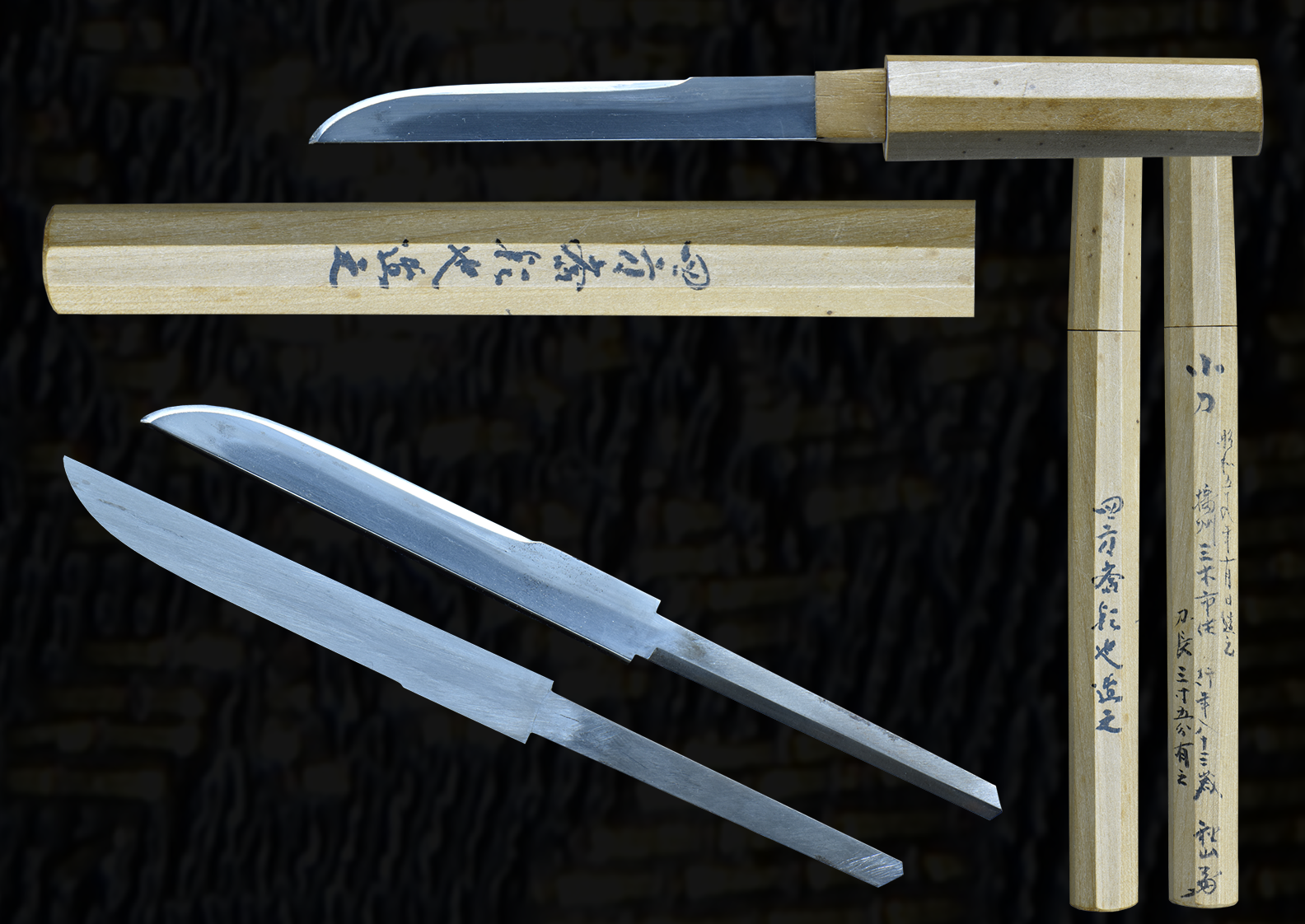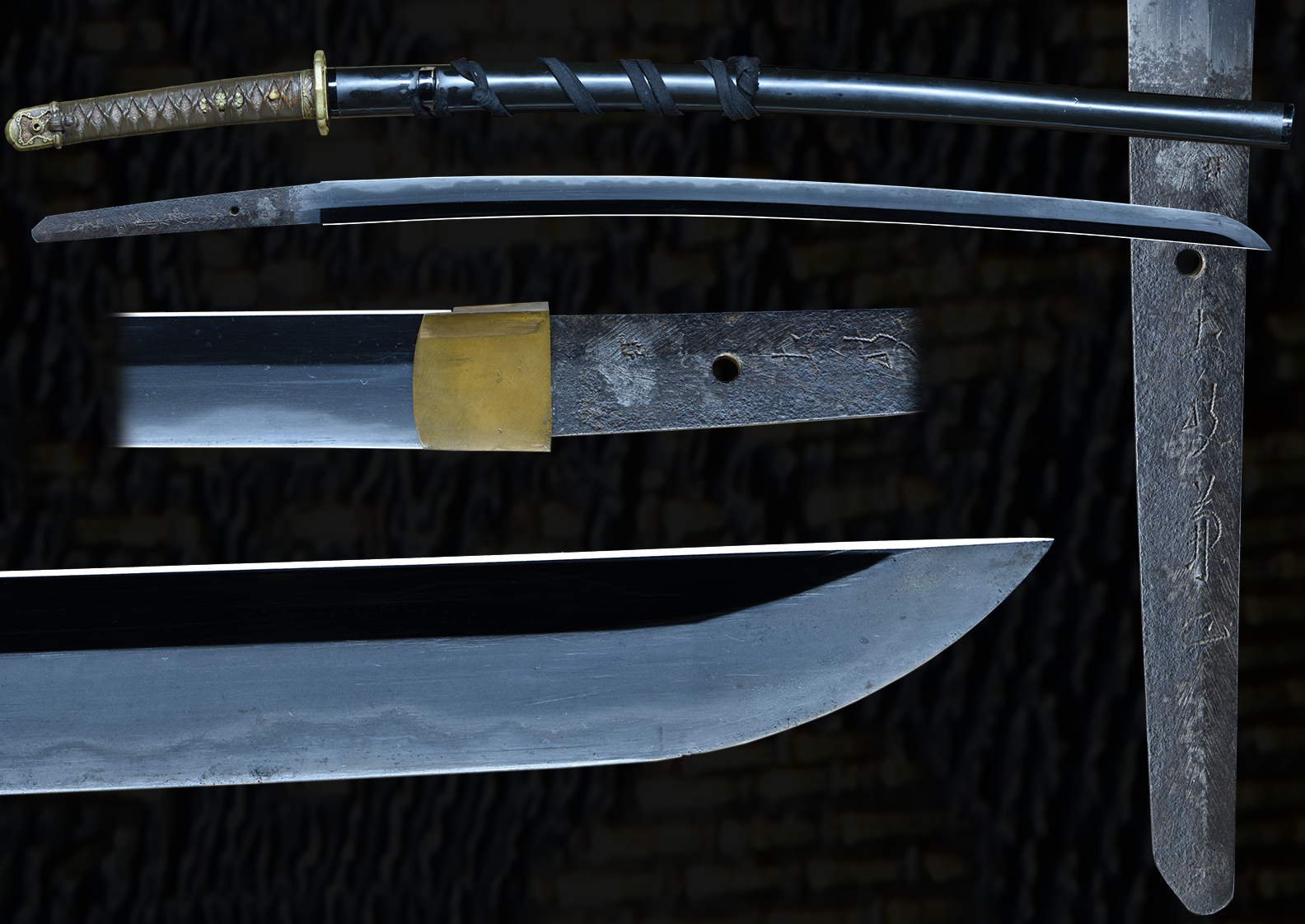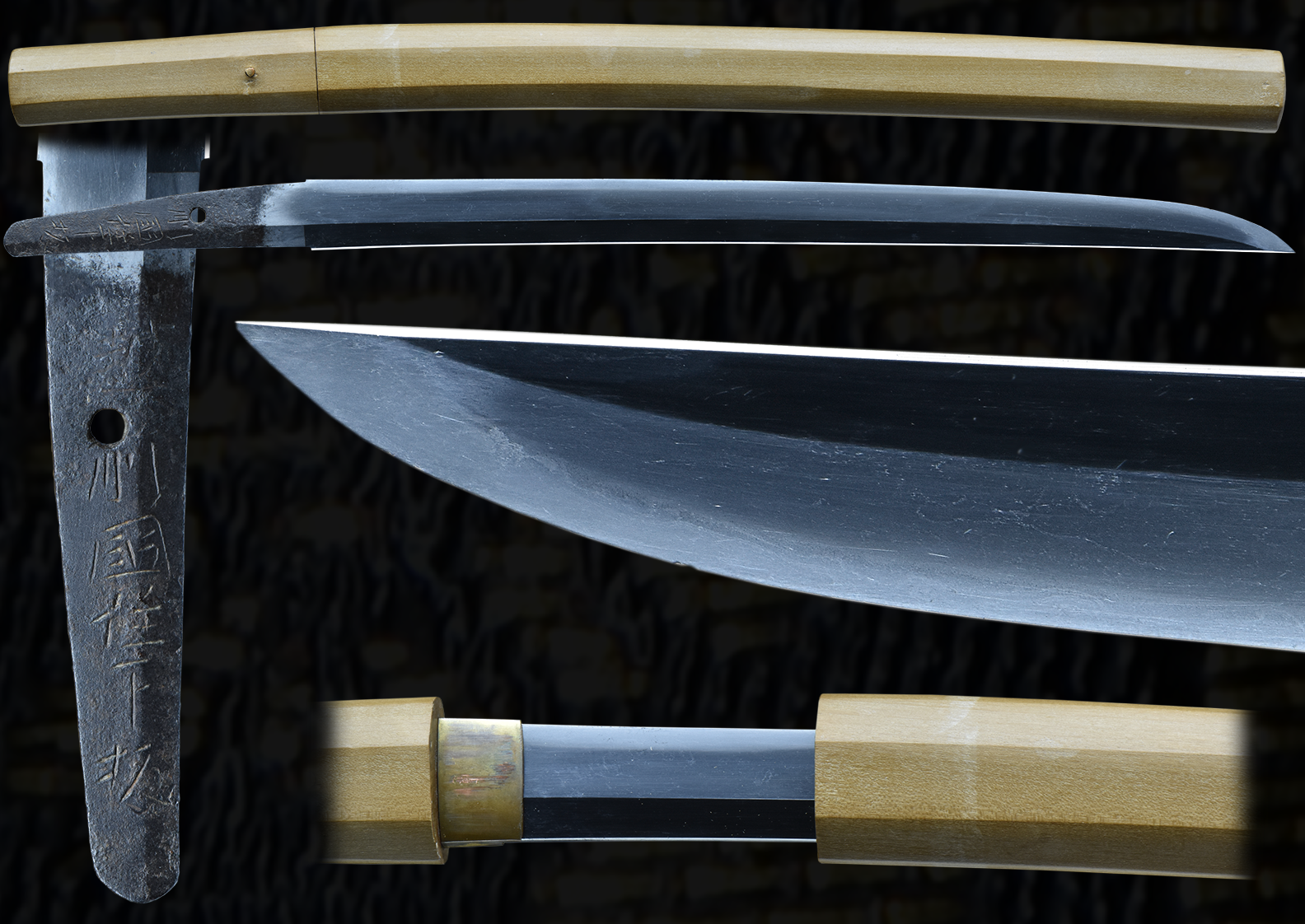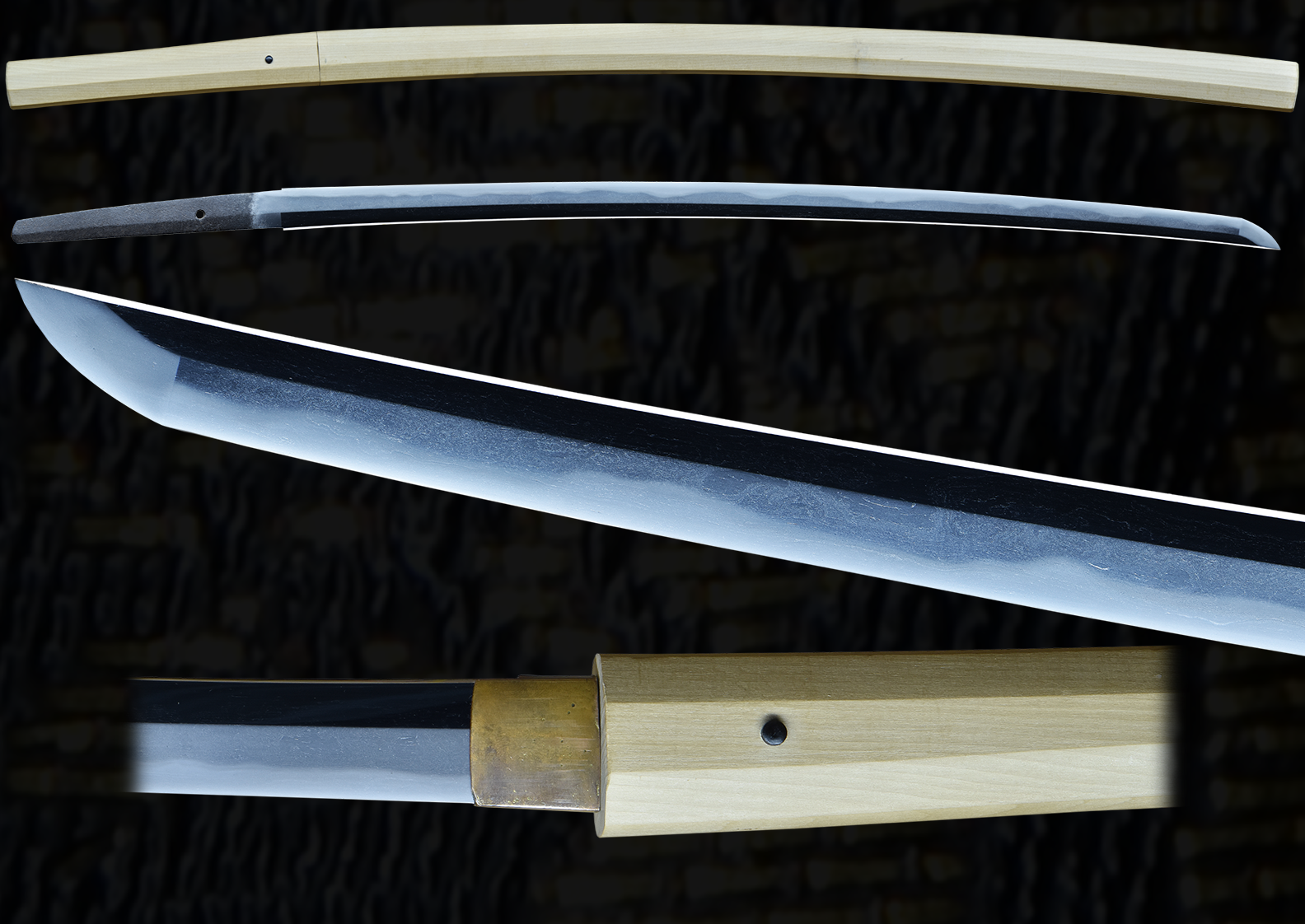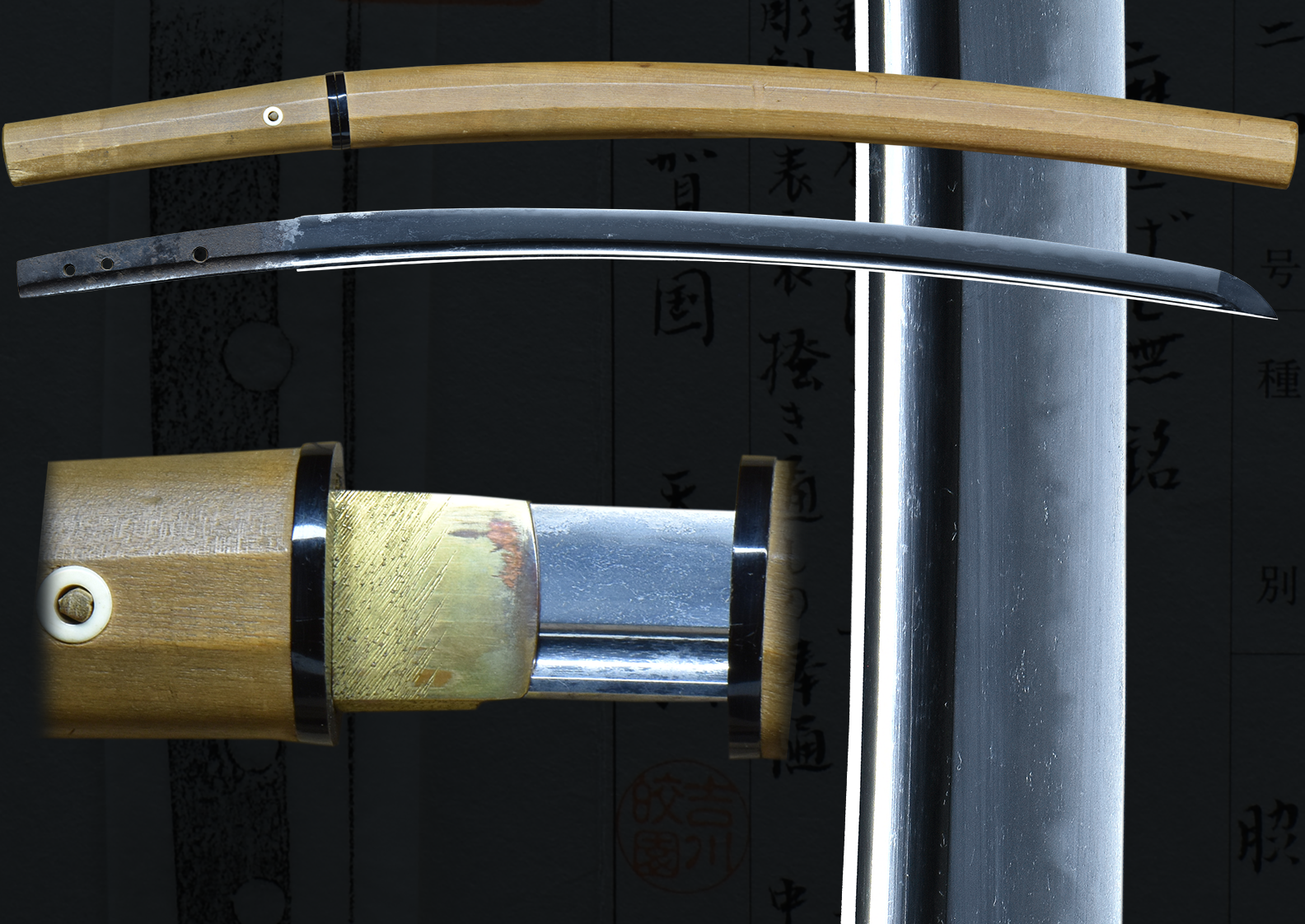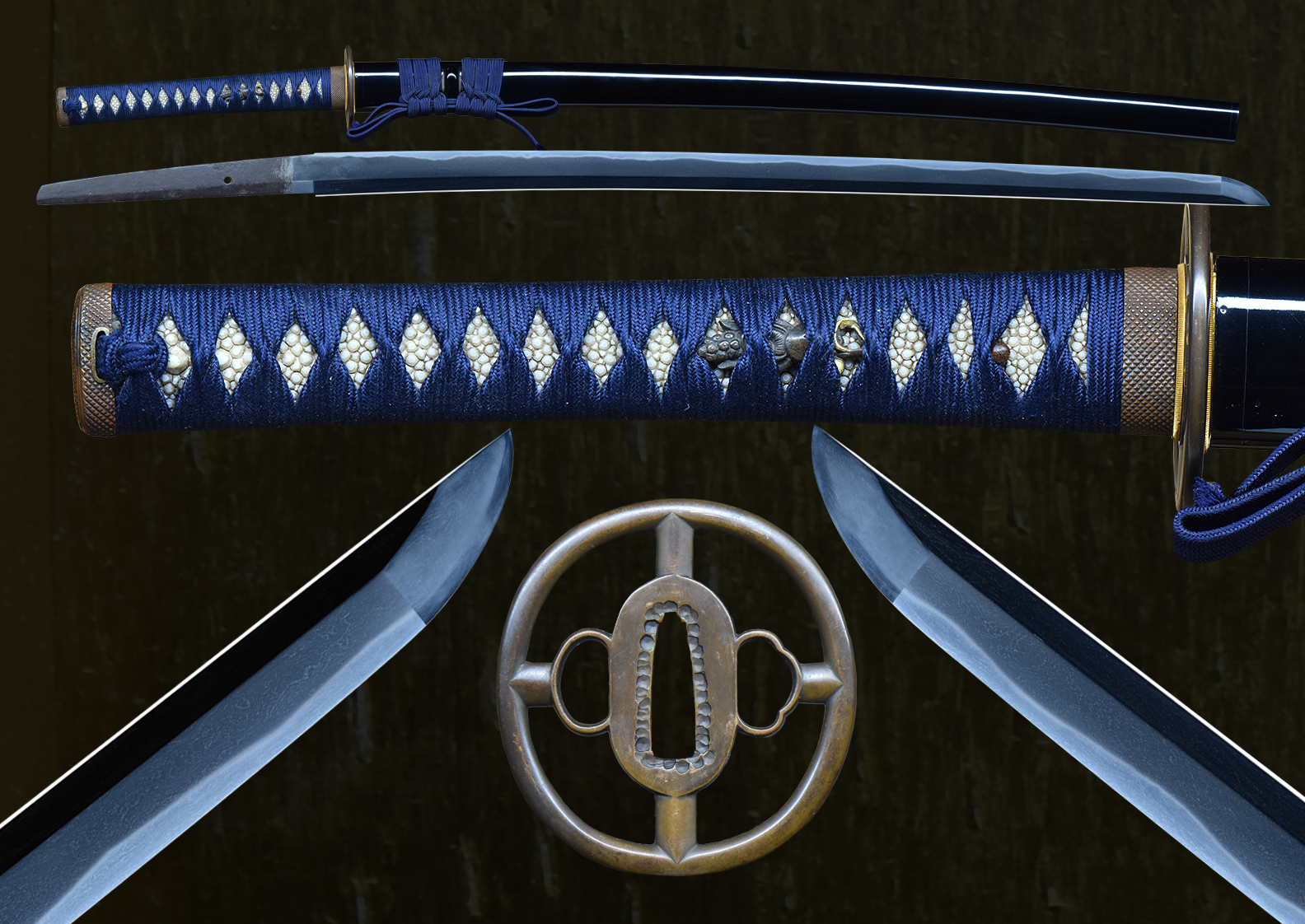The Original Nobutaka line of smiths starts with the 1st or Shodai who received the title of Hoki no Kami around 1581. A title which was carried by a total of five generations of smiths with this same name. The Shodai Nobutaka worked during the dawn of the Shinto period from warring states period through the Keicho era and into the the early 16th century under the Tokugawa Shogunate. He resided in Owari in 1610. He was the approx.50 years of age at this time. He was originally in Mino provence. Tokugawa Yoshinao was placed as the ruler of Owari, and head of the Owari Tokugawa branch at this time so Nobutaka knew that this area would be in need of a smith base. The demand for Nobutaka smiths swords arose as the Owari Tokugawa placed them under direct employment, and they made swords for the Tokugawa Kenjutsu instructor, Yagyu Renyasai Shigekane. For this reason, most Nobutaka works are gassaku (jointly made work) between the generations as they came of age and then passed the school on to the next.
The style of the Nobutaka smiths are referred to as “Owari Seki” due to their Mino origins and characteristics. Swords by the second and third generation have a distinct shape and are referred to as “Kanbun Shinto”. The Kanbun era was relatively short lived and the shape of the swords were with a shallow sori and a prevalent taper their entire length. This was an effort to capitulate on the style of swordsmanship of the times as well as the bokken they carried which were used in training in this period which were a straight, wooden replica sword called “bokuto or Bokken” and sometimes very large heavy “suburito”. This was a time of competition between rival schools of swordsmanship rather than battle field combat. The rationalization was to fight with a weapon that replicated the expendable substitutes used in training. Given the reputation of the Yagyu school and its training regimens, in conjunction with the fact that Nobutaka smiths were one of the exclusive suppliers of swords to them, the reasons for their shape and features are clear. Nobutaka swords also were regarded as excellent cutting weapons and rated wazamono , undoubtedly to the delight of Yagyu members and the Tokugawa alike.
The Shodai Nobutaka died in 1636 at 76 years of age after retiring at 73 years old. He was ranked Wazamono for the great deal of sharpness of his blades.There were many lines of smiths carrying this name for many generations to come.
NOBUTAKA (信高), 3rd gen., Kanbun (寛文, 1661-1673), Owari – “Hōki no Kami Fujiwara Nobutaka” (伯耆守藤原信高), “San ́ami-raiha Hōki no Kami Nobutaka saku” (三阿弥来派伯耆守信高作, “made by Hōki no Kami Nobutaka from the San ́ami school”), real name Kawamura Sannojō (河村三之丞), he signed in early years with Nobuteru (信照), he received the honorary title Hōki no Kami in the fifth year of Kanbun (1665) and died in the eighth month of Hōei four (宝永, 1707) at the age of 76, chūjō-saku
This sword is a prime example of an Owari Nobutaka blade. Though mumei it was attributed to the 3rd generation. At almost 29” this blade has tremendous balance with its Kanbun Shinto shape. The blade is ubu at 28.86 inches. This smith was rated as Chujo Saku.
The hada is a beautiful mix of mokume and itame tightly woven with the differing hardnesses of steel showing to produce and swirling chikei that can be viewed for hours on end. Jio-nie is visible throughout creating a glistening sparkle.
The hamon is a very attractive ko-notare dotted with gunome mounds. It easily reminds one of hills and mountaainbs against a backdrop of a starry night which is the hada. The boshi is a shallow ko-maru. A real pleasure to study and view.
The koshirae is an understatement of samurai values. The saya is in [pristine black lacquer. The tsuka is wrapped in blue ito with matching blue sageo. The fuchi kashira are a yamagane in a pindot design. The menuki are of. The habaki is beautifully finished gilded in glod with a gilded set of seppa. There is an iron owari style Sukashi tsuba of iron.
- Mei: Mumei
- Date: Edo (1600’s-1700’s)
- Nagasa: 28-7/8 inches
- Sori: 6.5 mm
- Width at the ha-machi: 33.5 mm
- Width at the yokote: 22.8 mm
- Thickness at the mune-machi: 8.4 mm
- Construction: Shinogi zukuri
- Mune: Iori
- Nakago: Ubu
- Kitae: Itame
- Hamon: Midare
- Boshi: sugu with hakikake at the tip
- Condition: Good polish
(shipping and insurance included)
Email us if your interested in this item and remember to include the order number for this item: fss-866.
Click to Enlarge Image
Click to Enlarge Image
Kantei-sho (鑑定書) ‒ Appraisal
Katana (刀)
Den Bishū Sandai Hōki no Kami Nobutaka (伝尾州 三代伯耆守信高)
‒ Attributed to the third generation Hōki no Kami Nobutaka from Owari province
Shōshin (正真) ‒ Authentic
nagasa 2 shaku 4 sun 2 bu kore ari (⻑さ二尺四寸二分有之) ‒ Blade length ~ 73.3 cm
Heisei 28 nen 2 gatsu 28 nichi (平成二十八年二月二十八日) ‒ February 28, 2016
Non-Profit Organization (特定非営利活動法人)
Nihon Tōken Hozon Kai (日本刀剣保存会) ‒ NTHK
Board Chairman (理事⻑): Miyano Teiji (宮野貞司
No T1600366
meibun (銘文) ‒ Signature: ubu mumei
tsukurikomi (造り込み) ‒ Shape: shinogi-zukuri, iori-mune
kitae (鍛) ‒ Forging: dense itame
hamon (刃紋) ‒ Hardening: medium wide ko-notare with midare
bōshi (鋩子) ‒ Hardening in tip: sugu with hakikake at the tip
chōkoku (彫刻) ‒ Engravings:
nakago (中心) ‒ Tang: mekugi-ana (目釘穴) 1, yasurime (鑢): sujikai with keshō
bikō (備考) ‒ Remarks: around Enpō (延宝, 1673‒1681)
shinsaʼin natsuʼin (審査員捺印) ‒ Seals of Judges: 4 seals
For Sale
